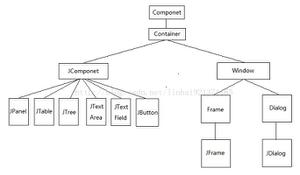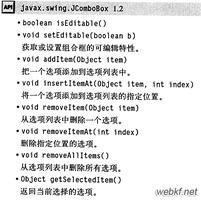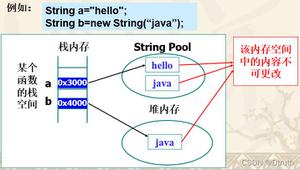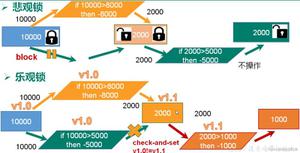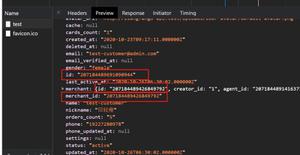java实现银行家算法(Swing界面)
java代码实现了银行家算法,界面写的个人认为还是较为细致的,完整的实现了找安全序列等算法功能,可作为参考学习银行家算法。
直接上代码:①界面展示方法:
public void ShowFrame()
{
this.setSize(500, 350); //大小
this.setAlwaysOnTop(true);
this.setResizable(false);//不可拖动
this.setLayout(new BorderLayout());
this.setTitle("lly_banktest");
jp1=new JPanel();
String s[]= {"Allocation","Max","Available","Request"};
jcb1=new JComboBox(s);
jp1.add(jcb1);
jp1.add(new JLabel("PID:"));
jtf1=new JTextField(3);
jp1.add(jtf1);
jp1.add(new JLabel("A:"));
jtf2=new JTextField(3);
jp1.add(jtf2);
jp1.add(new JLabel("B:"));
jtf3=new JTextField(3);
jp1.add(jtf3);
jp1.add(new JLabel("C:"));
jtf4=new JTextField(3);
jp1.add(jtf4);
jb1=new JButton("确定");
jp1.add(jb1);
jb1.addActionListener(this);
this.add(jp1,"South");
jta1= new JTextArea(); //显示文件本域
ShowData(); //显示数据
jta1.setLineWrap(true); //自动适应
int r,g,b;
jta1.setBackground(Color.white);
jta1.setEditable(false);
this.add(jta1,"Center");
// Font f=new Font("Dialog",Font.BOLD,12); //
jp1.setBackground(new java.awt.Color(128,255,128));
}
public void ShowData(){
jta1.setText(" Max \tAllocation Need \tAvailable\n");
jta1.append("\n"+" 资源: " + " A B C " +" A B C " +
" A B C " +" A B C");
jta1.append("\n 进程\n "+pname[0]+" " +
+Max[0][0]+" "+Max[0][1]+" "
+Max[0][2]+" " +
" "+Allocation[0][0]+" "+Allocation[0][1]
+" "+Allocation[0][2]+" " +
" "+Need[0][0]+" "+Need[0][1]
+" "+Need[0][2]+" " +
" "+Available[0]+" "+Available[1]+
" "+Available[2]);
for(int i=1;i<5;i++)
{
jta1.append("\n\n "+pname[i]+" " +
" "+Max[i][0]+" "+Max[i][1]+" "+Max[i][2]+" " +
" "+Allocation[i][0]+" "+Allocation[i][1]
+" "+Allocation[i][2]+" " +
" "+Need[i][0]+" "+Need[i][1]
+" "+Need[i][2]+" " );
}
jtf1.setText("");
jtf2.setText("");
jtf3.setText("");
jtf4.setText("");
}
截图:
②算法实现代码:
public void myAllocation(int i) //分配资源
{
for (int j=0;j<sno;j++)
{
Available[j]=Available[j]-Request[j];
Allocation[i][j]=Allocation[i][j]+Request[j];
Need[i][j]=Need[i][j]-Request[j];
}
}
public boolean judge(int i, int Request[] ) //初步检查是否有足够资源
{
boolean choice=false;
for(int j=0;j<sno;j++){
if(Request[j]>Need[i][j])
break;
if(Request[j]>Available[j])
break;
else choice=true;
}
return choice;
}
public boolean SaftyCheck(int p) //安全性检查
{
int k = 0;
boolean b=true;
Work=new int[sno]; //定义工作向量并赋初值
Finish=new boolean[pno];
for(int i=0;i<sno;i++)
{
Work[i]=Available[i];
}
for(int i=0;i<pno;i++)
Finish[i]=false; //初值为false
Finish[p]=true; //初次检查
for(int j=0;j<sno;j++)//释放资源
{
Work[j]=Work[j]+Allocation[p][j];
}
temp[k++]=p;
boolean found = false;//标记是否找到安全进程
while(k<pno-1){ //遍历查找安全序列
for(int i=0;i<pno;i++)
{
boolean flag=true;//标记是否有足够资源
if(Finish[i]) continue ;
for(int j=0;j<sno;j++)
{
if(Need[i][j]>Work[j]) //资源不足,退出
{
flag=false;
break;
}
}
if(flag) //找到资源
{
temp[k++]=i;//存储安全序列
Finish[i]=true;
found=true;
for(int j=0;j<sno;j++)//释放资源
Work[j]=Work[j]+Allocation[i][j];
}
}
if(found)
{
found=false;
}
else break;//遍历,试分配失败跳出
}
for(int i=0;i<pno;i++){ //若存在false,则跳出
if(!Finish[i])
{
b=false;
break;
}
}
return b;
}
截图:
③事件响应函数:
public void actionPerformed(ActionEvent e) {
//事件响应函数
if(e.getSource()==jb1){//按下“确定”
if(jcb1.getSelectedItem()=="Request"){
int p=0;
try{
p=Integer.parseInt(jtf1.getText());
Request[0]=Integer.parseInt(jtf2.getText());
Request[1]=Integer.parseInt(jtf3.getText());
Request[2]=Integer.parseInt(jtf4.getText());
}catch(Exception d)
{
JOptionPane.showMessageDialog(this, "您输入有误!请重新输入!");
ShowData();
return;
}
if(p>4) //限定输入进程ID范围
{
JOptionPane.showMessageDialog(this, "PID在0-4之间!");
jtf1.setText("");
return;
}
if(judge(p,Request))//初步分配检查
{
if(SaftyCheck(p)){//安全性检查
ShowData();
jta1.append("\n\n 通过安全性检查!安全序列为:");
for(int i=0;i<pno;i++)//打印安全序列
jta1.append("P"+String.valueOf(temp[i])+" ");
jta1.append(" 批准请求,资源已分配!");
myAllocation(p);//检查到安全序列才分配
}else //不安全
{
ShowData();
//jta1.append("\n\n 找不到安全序列! 不批准请求!");
JOptionPane.showMessageDialog(this, "找不到安全序列! 不批准请求!");
}
}else{
ShowData();
jta1.append("\n\n 系统资源不足!");
}
}
/***
* 选择avaliable时!
*/
else if(jcb1.getSelectedItem()=="Available"){//设置可用资源
try{
Available[0]= Integer.parseInt(jtf2.getText());
Available[1]=Integer.parseInt(jtf3.getText());
Available[2]=Integer.parseInt(jtf4.getText());
}catch(Exception d)
{
JOptionPane.showMessageDialog(this, "您输入有误!请重新输入!");
ShowData();
return;
}
ShowData();
jta1.append("\n\n 可用资源设置成功!");
}
/**
* 选择Max时!
*/
else if(jcb1.getSelectedItem()=="Max"){//设置最大需求源
int p = 0;
try{
p =Integer.parseInt(jtf1.getText());
if(p>4)
{
JOptionPane.showMessageDialog(this, "进程ID在0-4之间!");
jtf1.setText("");
return;
}
int Maxago[][]= new int[pno][sno]; //暂存最大需求
Max[p][0]=Integer.parseInt(jtf2.getText());
Max[p][1]=Integer.parseInt(jtf3.getText());
Max[p][2]=Integer.parseInt(jtf4.getText());
for(int j=0;j<sno;j++){ //判断设置是否合理
int temp =Max[p][j]-Allocation[p][j];
if(temp>=0)
Need[p][j]=temp;
else
{
JOptionPane.showMessageDialog(this, "最大需求过小!请重新输入!");
Max=Maxago;
ShowData();
return;
}
}
}catch(Exception d)
{
JOptionPane.showMessageDialog(this, "输入有误!请重新输入!");
ShowData();
return;
}
ShowData();
jta1.append("\n\n 最大需求设置成功!");
}
/**
* 选择Allocation时!
*/
else if(jcb1.getSelectedItem()=="Allocation"){//设置已分配资源
int p = 0;
try{
p =Integer.parseInt(jtf1.getText());
if(p>4)
{
JOptionPane.showMessageDialog(this, "进程ID在0-4之间!");
jtf1.setText("");
return;
}
Allocation[p][0]=Integer.parseInt(jtf2.getText());
Allocation[p][1]=Integer.parseInt(jtf3.getText());
Allocation[p][2]=Integer.parseInt(jtf4.getText());}
catch(Exception d)
{
JOptionPane.showMessageDialog(this, "输入有误!请重新输入!");
ShowData();
return;
}
ShowData();
jta1.append("\n\n 已分配资源设置成功!");
}
}
截图:
以上是 java实现银行家算法(Swing界面) 的全部内容, 来源链接: utcz.com/z/323427.html

